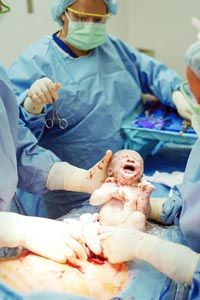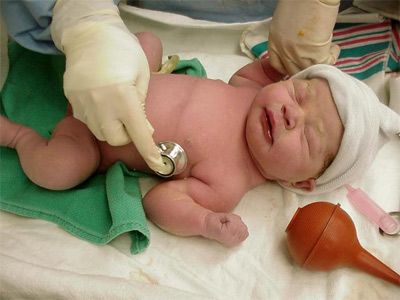Many of us were taught the basics of pregnancy and childbirth in health education classes. From learning how the sperm and egg join to seeing how the fetus grows as the weeks go by, the whole process is pretty fascinating. But if there was any point where you got disgusted and tuned out, it was probably during the childbirth video shown at the end of the class. Seeing an actual birth makes the process real in a way that those textbook illustrations, plastic models and long explanations simply can't.
Childbirth is a miracle, but it's a rather messy one. It's also as complex and fascinating, in its own way, as the entire pregnancy. Who should deliver the baby? Where? Does the expectant mother want a natural childbirth, or would she prefer pain relief? What if she needs a C-section?
Advertisement
Things used to be much simpler. Women found out that they were pregnant when they stopped having a period and their stomach started to get bigger. When they went into labor, they usually delivered at home. They might labor alone or have an experienced female relative, friend or midwife to assist. Doctors weren't brought into the process unless there were complications, which still sometimes resulted in the death of the mother, the baby, or both.
Today it's less likely for a woman to die in childbirth in the United States, but it can still happen. According to the National Center for Health Statistics, the rate was about 13 per 100,000 live births in 2004 [source: National Center for Health Statistics]. That's a low number, but it has risen slightly in the past several years. Some experts blame the rise in C-sections. Others point to the increased risks associated with maternal obesity and the later ages at which women are giving birth.
If you compare these statistics to those in some other countries, it's clear that pregnant women in wealthier, more developed countries have a strong advantage. No European country had a death rate of higher than 10 per 100,000 births in 2005. But look at the statistics in African countries and you'll see a grimmer picture. The maternal death rate in Chad was 1,500 per 100,000 live births in 2005 [source: World Health Organization].
What can an expectant mother do to help ensure a safe and healthy childbirth? At the top of the list is education. Let's take a look at what she can do with what she learns.
Advertisement













